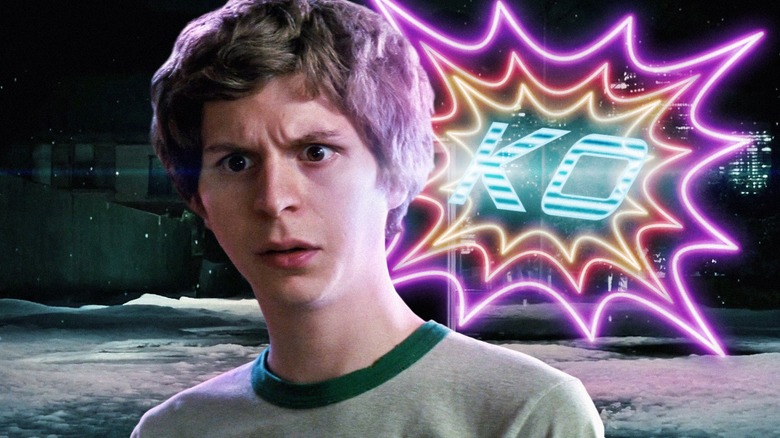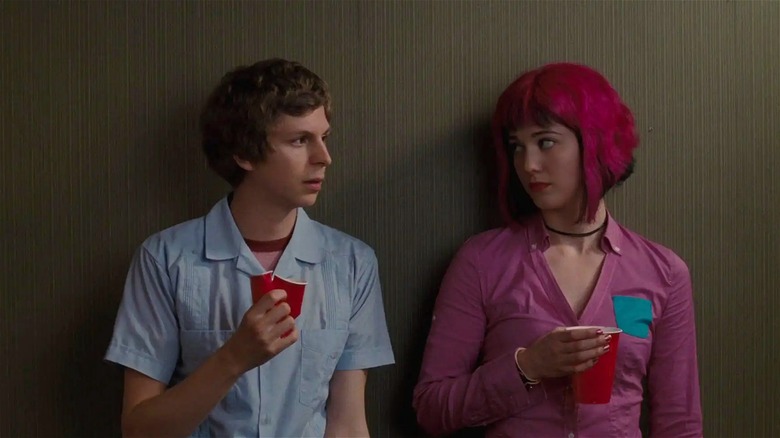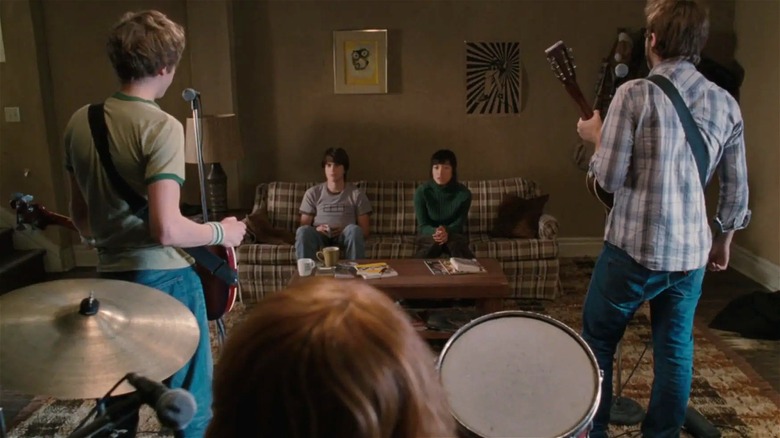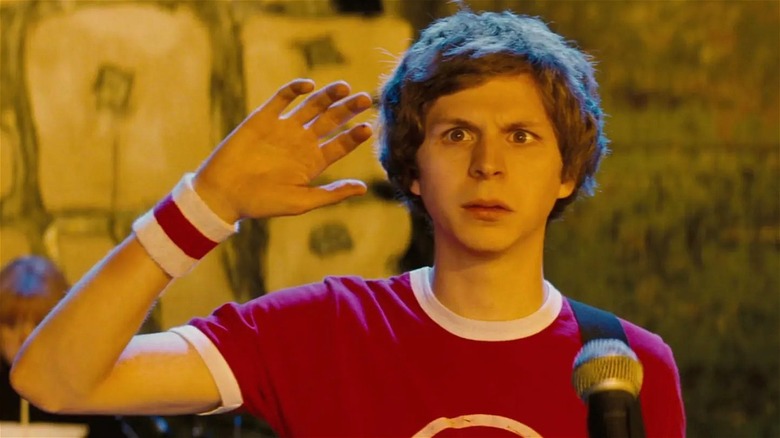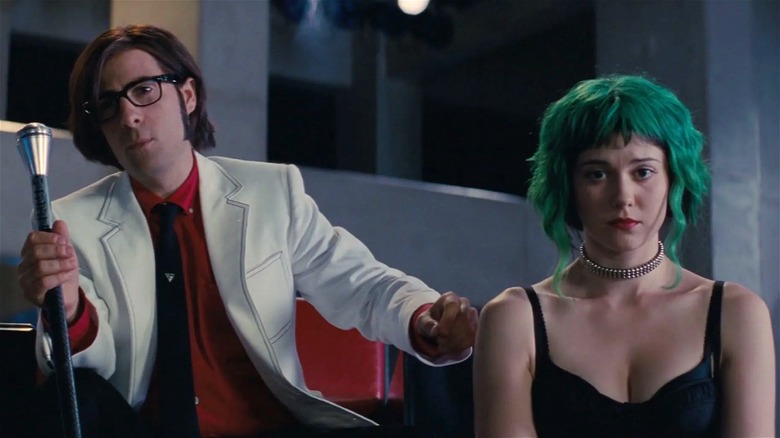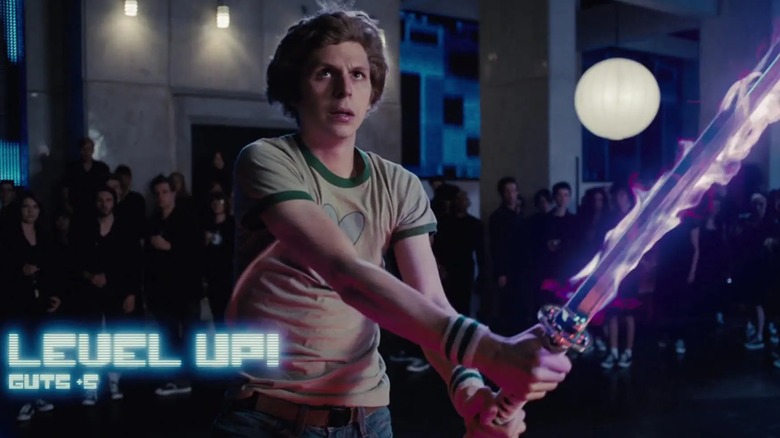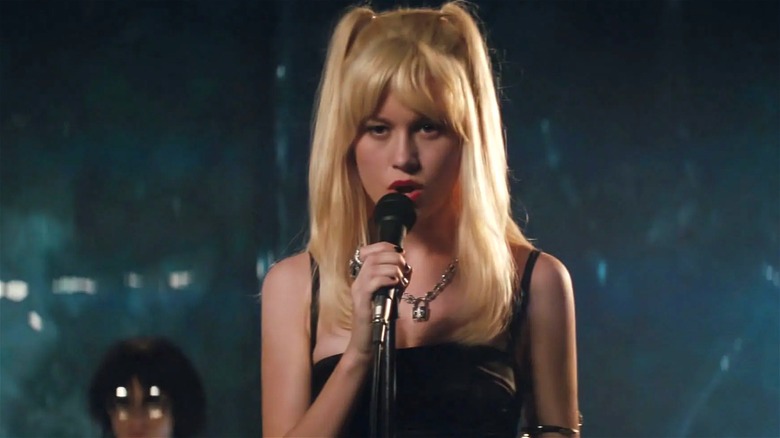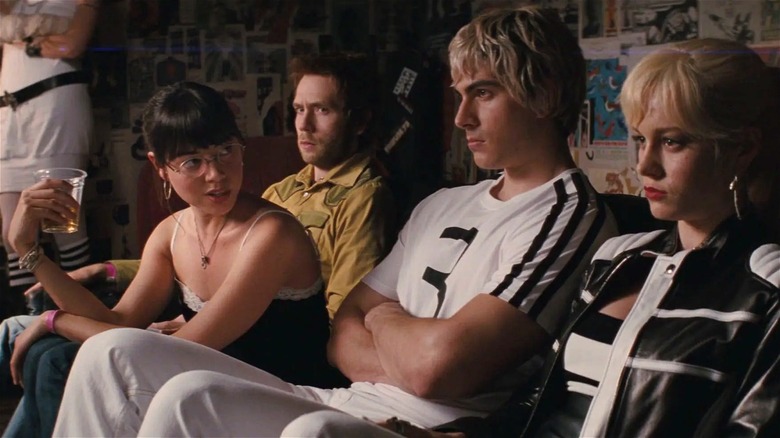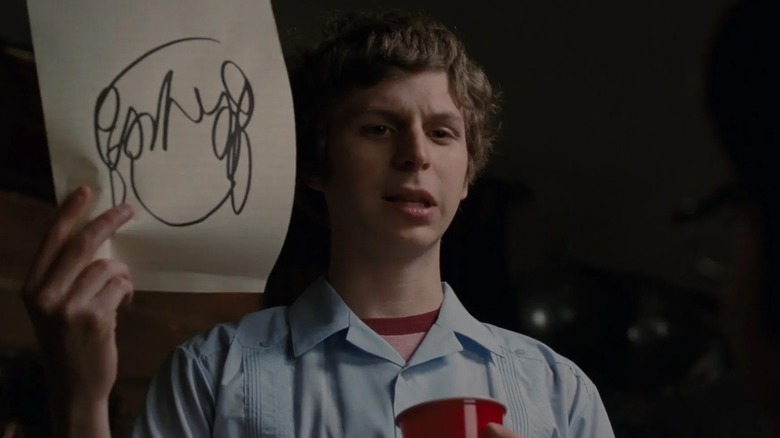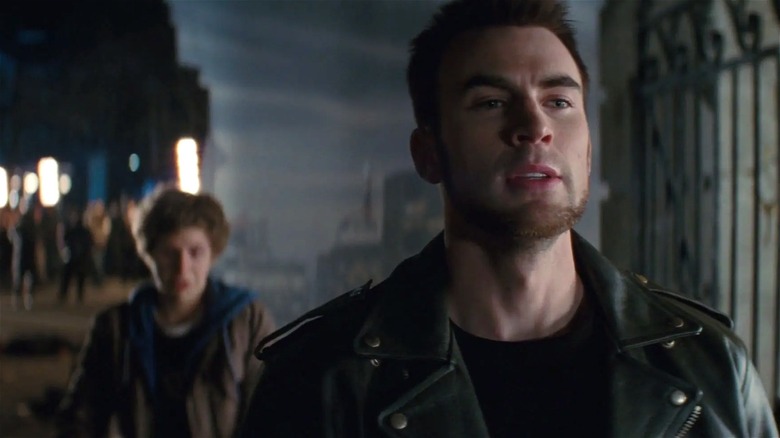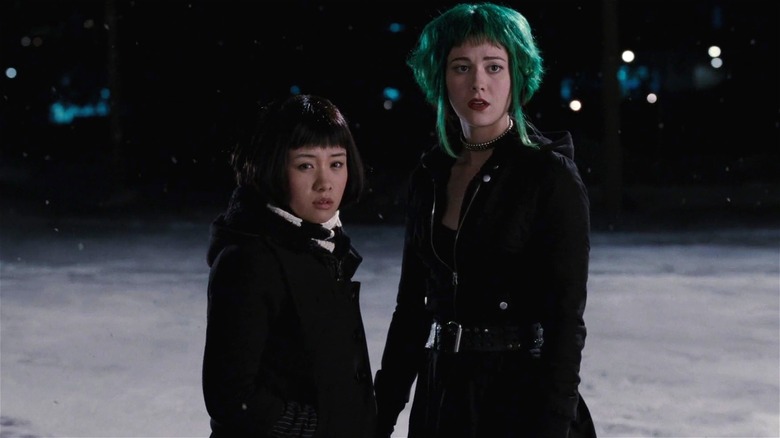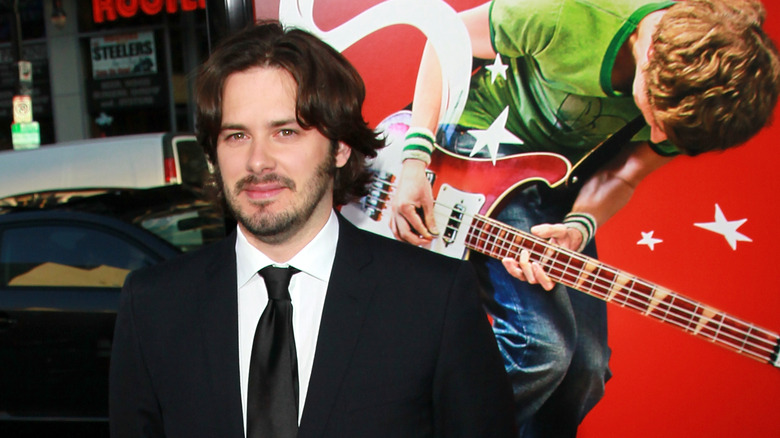Why Scott Pilgrim Vs. The World Bombed At The Box Office
There is a lot to love about "Scott Pilgrim vs. the World." An adaptation of a comic book that incorporates video game themes all while being centered around music, the film blends multiple genres including romance, comedy, and action. Directed by Edgar Wright, who had previously helmed "Shaun of the Dead," the 2010 feature has since exploded as a cult classic.
"Scott Pilgrim vs. the World" has been called one of the greatest movies of the century and one of the best comic book adaptations ever made. Its never-ending references appeal to a wide range of fandoms and make it the ultimate movie for our ever-growing geek culture. The film later spawned its own video game adaptations and has been reimagined as a Netflix anime series titled "Scott Pilgrim Takes Off."
Despite a devout fanbase today, "Scott Pilgrim vs. the World" is also notorious for being a major disappointment at the box office. With an estimated budget of $85 million, the film failed to make its money back in theaters, collecting under $50 million worldwide. Thankfully, it was not quite over for the feature, which eventually found its audience in home media releases.
Still, the movie's lackluster release has become one of Hollywood's biggest case studies. How could a film that checks so many boxes, was reviewed almost unanimously positively, and features a cast loaded with up-and-coming movie superstars fall so miserably flat? Well, plug in and keep reading to discover how "Scott Pilgrim vs. the World" shockingly became a box office Bob-Omb.
The source material was still obscure
Before exploring what happened to "Scott Pilgrim vs. the World" in theaters during the summer of 2010, let's find out how the film came to be. Unlike major comic book adaptations like "The Avengers," "Scott Pilgrim vs. the World" was not a title with decades of content and an ardent fan base. Rather, the black-and-white source material began as a small project by a cartoonist working at a small comic publishing company.
Bryan Lee O'Malley created, wrote, and illustrated "Scott Pilgrim's Precious Little Life" for Oni Press in 2004 with a plan for five sequels. Despite lackluster sales, the title was soon shopped around Hollywood as a potential blockbuster. Surprisingly, up-and-coming director Edgar Wright attached himself to the project as early as 2005. However, with a year between new issues, it wasn't until the release of Volume 4, "Scott Pilgrim Gets It Together," in 2007 that the film project gained serious traction as the comics began selling better.
However, with seven evil exes still to fight, the script for the upcoming film was being written before the story had a conclusion. O'Malley confessed that much of Volume 5 and 6 was heavily influenced by his movie-making experience. Shockingly, the last issue "Scott Pilgrim's Finest Hour" was released almost simultaneously with the movie, leaving fans little time to read the completed works. Meanwhile, sales were strong — but not nearly equal to what sets comics up for the film treatment nowadays.
A marketing Bob-Omb
"Scott Pilgrim vs. the World" is not easily classified. The film weaves together adventure, comedy, and a bit of science fiction, while the deepest undertone of the film is a story of young romance. Sadly, Universal Pictures's choice to focus its marketing efforts on the love story between Pilgrim and Ramona Flowers is something that many fans pinpoint as the source of the movie's box office unraveling. The film's first official trailer places Pilgrim's path to capturing the heart of his dream girl as the primary element of the film. Elements that fans loved, such as references to comic books, video games, and music come second — if at all.
"I think 'Scott Pilgrim' is a tricky one to sell," actor Michael Cera admitted in an interview with TimeOut after the film's disappointing debut weekend. "I don't know how you convey that movie in a marketing campaign. I can see it being something that people are slow to discover. In honesty, I was slow to find 'Shaun of the Dead.'"
To the studio's credit, "Scott Pilgrim vs. the World" was marketed heavily as one of the most prominent features of the year's San Diego Comic-Con. Attendees saw the first public screening of the film, a live performance from Metric, and Cera arriving in a Captain America costume. Despite causing a stir at the event and creating positive reviews, the event only managed to excite its small, targeted audience.
A limited audience
Although Universal Picture's marketing team takes much of the blame for the lackluster box office performance of "Scott Pilgrim vs. the World," the studio does not deny that they were facing an uphill battle. "We have always been aware of the challenges of broadening this film to a mainstream audience," read a statement from Universal Pictures spokesperson Paul Pflug that was provided to Time. The problem Universal faced was the genre-bending obscurity of the film that targeted a specific demographic of males between the ages of 20 and 40.
"It's too cool for its own good," explained box office analyst Jeff Bock to MTV. "When you only appeal to teens and hipsters, you're limiting your audience, and your film better only cost $30 million. 'Pilgrim' cost at least twice that amount. Don't spend more than $30 million on films that are too hip for the general populace."
A report of the film's theatrical performance for The Italian Journal of Game Studies suggests that Universal could have been wiser with how the film reached audiences by explaining that a "more target-oriented release schedule" could have connected better with college-aged viewers. Despite all the theories of how "Scott Pilgrim vs. the World" could have adjusted its approach to its initial release, the movie would eventually find its audience and become a cult hit.
Scott Pilgrim vs. the Recession
Regardless of conjecture, it could be argued that "Scott Pilgrim vs. the World" was simply released at a bad time, as the movie debuted in an era when money was tight for everyone. In the summer of 2010, the world was still in recovery from the Great Recession and the target audience of "Scott Pilgrim" faced some of the emptiest pockets. "'Scott Pilgrim' could have worked better at a different time of the year," Gitesh Pandya of Box Office Guru told MTV. "The target audience of young people tend to get tapped out of cash by late summer and become even more picky with their few dollars left."
Still, the recession theory digs deeper, and it concerns the movie's slacker protagonist. In the film, Pilgrim is depicted as a jobless struggling musician who crashes with his gay best friend. Worse, when he finally lands a date with his dream girl, the broke Pilgrim resorts to walking the frozen streets of Toronto, suggesting he could not afford to properly wine and dine Flowers. A 2010 article from The Wrap proposed that audiences no longer resonated with characters that couldn't pull their financial weight. One film marketing executive remarked, "In recessionary time, who wants to see a movie about 20-year-old slacker do-nothings who are in a band?"
Evil exes at the box office
Putting aside all the obstacles "Scott Pilgrim vs. the World" was facing before its debut, it is safe to say that the movie got knocked out by its competition. Opening on the same weekend as the Sylvester Stallone directed film "The Expendables," the scrawny "Scott Pilgrim vs. the World" didn't have a chance. Even Michael Cera understood how "The Expendables" won the weekend, saying to TimeOut, "It's an easy choice -– seeing the wrestler Stone Cold getting punched by Stallone or -– Gosh, it's like saying, 'Would you like pizza or would you like this beautifully prepared spaghetti dish that this fine chef made?'"
"Scott Pilgrim vs. the World" also got beaten by the Julia Roberts-led romantic drama "Eat, Pray, Love," the Will Ferrell comedy "The Other Guys," and the Christopher Nolan thriller "Inception." Ultimately, "Scott Pilgrim vs. the World" finished fifth on its opening weekend domestic gross charts, dropping even further in its second week behind movies like "Vampires Suck" and "Piranha 3D."
Video game references make you a geek?
The titular Scott Pilgrim earns his name from a song released by obscure Canadian '90s indie rock band Plumtree, which is just the beginning of all the random and diverse references in "Scott Pilgrim vs. the World." The movie peppers unabashed nods to an assortment of genres and mediums, including video games, television shows, comic books, anime, and music. Fans are still scouring the film for all its random Easter eggs and callouts.
While geek culture references help to give "Scott Pilgrim vs. the World" its unique style and connect with its target audience, it wasn't for everyone. Although the movie gained raving reviews from most critics, some were not as impressed with what one Boston Pheonix reviewer (via NPR) called a "dork-pandering assault." "Fan Service: The Movie," denoted another review from Philadelphia Weekly. "An insular, punishingly alienating experience preaching only to the faithful, devoted hearts of arrested 12-year-old boys." Some of these negative insights inevitably caused some potential viewers to avoid paying the full ticket price at theaters.
Regardless of the attacks by reviewers not in the movie's demographic, a paper released by the Participations Journal of Audience & Reception Studies proposes, "The multiply layered aesthetic of the film invites the audience, particularly those who came of age in the '80s and '90s, to go beyond mere pleasurable enjoyment of the film, and into an active participation in constructing the film's meaning and storyworld."
Too Canadian
Some have even argued that "Scott Pilgrim vs. the World" may have been "too Canadian" for mass audiences. Undeniably, the musically influenced picture is equal parts a love letter and an exploration of the indie rock scene of mid-2000s Toronto, Ontario. At the time, Canadian groups such as Arcade Fire, Broken Social Scene, and Metric were spreading their raw guitar riffs across the Billboard charts. The genre is foundational for "Scott Pilgrim vs. the World" film, which features a battle-of-the-bands sub-plot and fictional indie groups such as Clash at Demonhead.
Ironically, the heavy dose of Canadiana may have been too obscure for international markets. When film director Edgar Wright appeared on The Ringer's "The Big Picture" podcast in 2020, one analyst prompted that "Scott Pilgrim vs. the World" flatlined in theaters because "It's too culturally Canadian to hit big."
Humorous but perhaps valid, Canadians are far more accustomed to American culture overloading their media than the other way around. Between Canadian currency, popular pizza joints, and local Toronto hangouts, "Scott Pilgrim vs. the World" does not shy away from its Great White North identity. Unfortunately, the snippet of a specific culture at a particular time may have struggled to "totally hook American audiences."
The characters are (intentionally) unlikable
During the conclusion of "Scott Pilgrim vs. the World," after defeating the seventh evil ex, the titular character is tasked with a bonus boss to battle: Nega Scott. A reference to video games where characters must battle an evil doppelganger of themselves, the dark version of Pilgrim in the movie proved to be a good guy. The humorous twist begs the question: If Nega Scott is good, is normal Scott a bad guy?
There are many critics of the film who point out Pilgrim's negative qualities. "He's a 23-year-old, jobless, nerdy couch surfer who is sometimes a good person, sometimes a lazy jerk and sometimes a selfish, narcissistic, cheating scumbag," notes a column from the Binghampton University Pipe Dream. Reddit user u/TheAmishCurse notes, "He continues to ultimately avoid almost every single consequence that would shape someone growing."
Although the terrible character traits were enough for some audience members to hit the power button on "Scott Pilgrim vs. the World," others argue that his flaws are essential. "It's about Scott reaching the point where he's mature enough, respectful enough of other people, basically, to have a real relationship," actor Michael Cera pointed out during an interview with HoumaToday. "Almost all of the key characters in the film are dealing with heartbreak," adds Mary Elizabeth Winstead, whose character Ramona Flowers has been criticized as flighty and distant. "It's about how they're trying to move on from it in different ways."
Michael Cera vs. the world
Director Edgar Wright said Michael Cera was his first choice to play the titular role in "Scott Pilgrim vs. the World." "He's both kind of the unexpected choice and also the perfect choice at the same time," Wright told Reuters in 2010. "For me there was never any other contender for the role because I thought of who I'd want to spend an hour and three-fourths with." However, some believe Cera is the core reason "Scott Pilgrim vs. The World" hit a game over at the box office.
By 2010, Cera was everywhere. After starring in the cult-classic television sitcom "Arrested Development," the actor headlined multiple feature films, including "Superbad," "Juno," and "Nick & Norah's Infinite Playlist." Regardless of his popularity, Cera faced criticism for playing the same character in multiple projects and being far too similar to other performers such as Jesse Eisenberg.
Most troubling, despite studios' multiple attempts, the actor was seemingly unable to draw a crowd to theaters based on his name alone. Seeing how "Scott Pilgrim vs. the World" essentially became Cera's last leading film role, some have questioned whether the film was the flop that stalled his career or if audiences had already grown tired of the actor.
That A-list cast weren't A-listers yet
It is safe to estimate that if a film were released today featuring an identical cast list of "Scott Pilgrim vs. the World," crowds would be swarming theaters. It is impressive how many big-name talents fill out the supporting roles of this teenage romance. Although, with a few exceptions, not all the performers were as well known in 2010 as they are today.
Many "Scott Pilgrim vs. the World" actors went on to become big-league superheroes, including Mary Elizabeth Winstead in "Birds of Prey," Chris Evans in "Captain America: The First Avenger," Brie Larson in "Captain Marvel," and Brandon Routh in "Superman Returns." Meanwhile, some of the other "Scott Pilgrim vs. the World" stars graduated into larger roles, such as Aubrey Plaza who was simultaneously breaking ground as the sharp-tongued April Ludgate on "Parks and Recreation," or Anna Kendrick who hit A-list status with 2012's "Pitch Perfect."
Even Kieran Culkin, who had success as a child actor well before "Scott Pilgrim vs. the World," has elevated his career recently with his award-winning performance in the HBO series "Succession." Additionally, while it wasn't enough to sell tickets, there was plenty of existing star power filling out the cast of Edgar Wright's film, including Jason Schwartzman, Alison Pill, Bill Hader, and even an uncredited Thomas Jane.
They couldn't get the ending right
As a result of writing the script for "Scott Pilgrim vs. the World" before the source material comic books were finished, there was some confusion over how the film should end. Director and co-writer Edgar Wright has since come forward about some of his original intentions for the film's conclusion. "The original ending had Gideon turning into a giant robot," Wright revealed to MTV. "That never went anywhere. We got rid of that because Bryan wasn't going to do that in the comics, and also we thought it would look like a 'Transformers' spoof, so we ditched it."
Still, "Scott Pilgrim vs. the World" had a bigger problem than fighting robotic monsters. Who would he choose before the final credits, Knives Chau or Ramona Flowers? The conclusion originally filmed resulted in Pilgrim and Knives rekindling their relationship. "When we had test screenings, it would kind of divide people," said Wright. O'Malley then decided to rewrite the ending for the books and the movie followed, undergoing three days of reshoots months before the film debuted.
The result is the theatrical ending with Flowers and Pilgrim running off together. "When we screened it again, the scores went hugely up," noted Wright. Unfortunately, both conclusions failed to completely satisfy the entire audience, with some critics arguing that Pilgrim should have ended up alone with his newly discovered self-respect.
Scott Pilgrim eventually levelled up
The theories behind Scott Pilgrim versus the box office Bob-Omb may be analyzed by experts for decades to come. Especially after the movie seemingly became a cult classic overnight after being released on home media in the winter of 2010.
Today, "Scott Pilgrim vs. the World" has become a cult legend for comic book and video game nerds alike. "I definitely think it's been a sleeper, in that more people are becoming aware of it as time goes by," Michael Cera told Looper. "When we made the movie, we all were so excited about it and having such a great time making it. I was sure that was going to come through in the movie, and I think it does. I'm really glad that people are connecting to it and finding it."
Director Edgar Wright values the lessons learned from "Scott Pilgrim vs. the World." "The three-day weekend is not the end of the story for any movie," he said in an interview with Hollywood Reporter. "Most of my favorite films that are considered classics today were not considered hits in their time. You can point to hundreds of classic movies, whether it's 'Citizen Kane' or 'Blade Runner' or 'The Big Lebowski.' So how a film does in its first three days is never the end of the story, and the further we get away from that discourse about box office numbers being the totality of a movie, the better."
